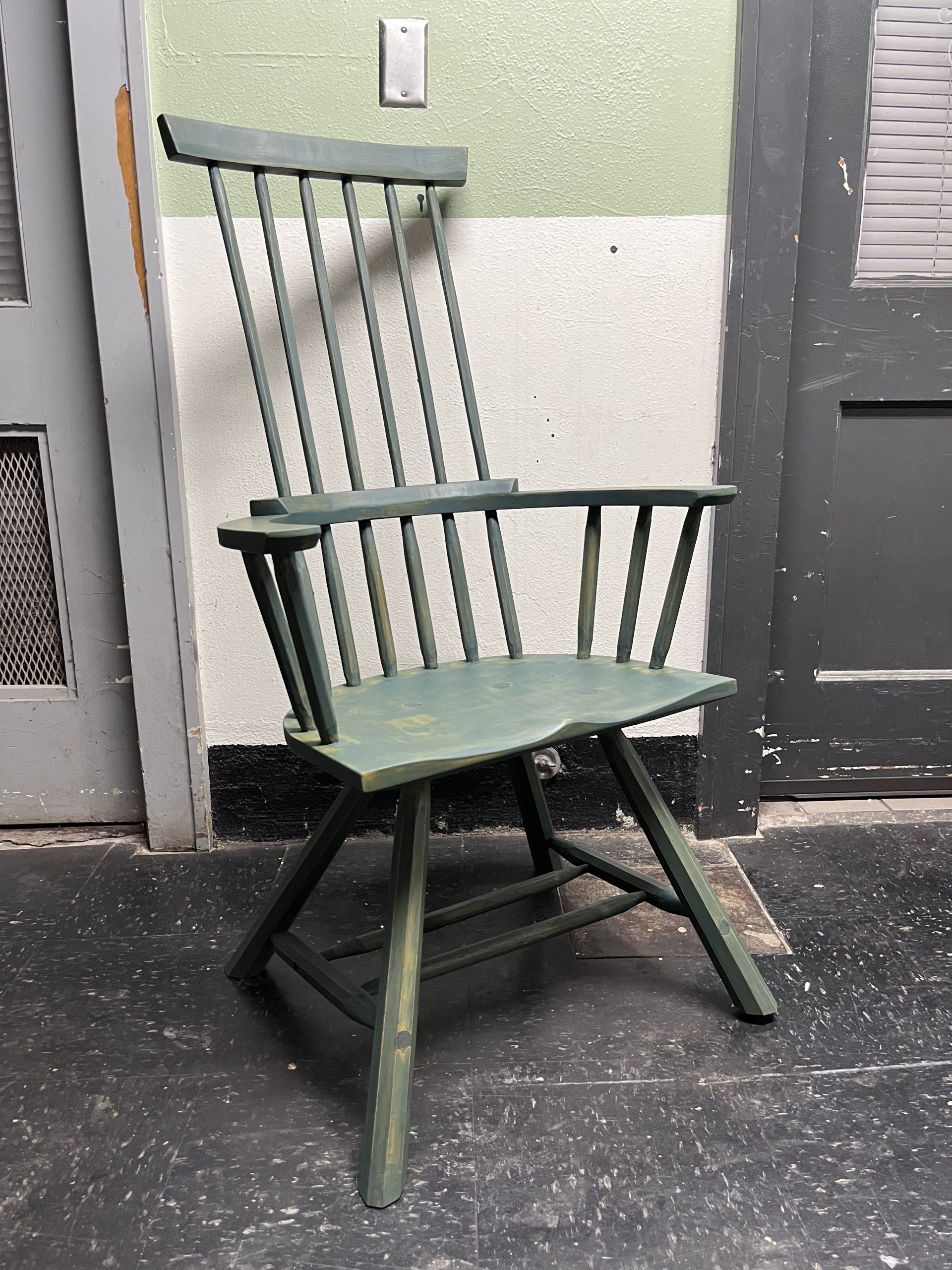In chairmaking, it’s common to use a variety of wood species, because each part has a different task or working technique. The legs need to be strong and sturdy, to hold the sitter’s weight and be resistant to leaning. The seat gets carved with curved tools, so needs to be easy to work, but otherwise doesn’t see a lot of force in use. The back sticks need to be strong, but also have a little bit of give to them to conform to the sitter’s body as they shift in the chair. All this means you may choose two or three different species of wood for a single chair, which gives each component of the assembled chair a different appearance. What can we do to make these different woods look harmonious?

Lately, I’ve been choosing to paint my chairs to address this. I’ve drawn mostly from the techniques Chris Schwarz and Peter Galbert describe on their websites and in their books. They both have used a variety of different paint types and manufacturers, so I’ve been experimenting with a few to find what works for me.
For the most recent chairs I’ve made, I’ve used paint powder from The Real Milk Paint Company. In his book, Galbert describes using two different paint colors on the chair: a typically light colored undercoat under a darker colored topcoat. The undercoat tints the topcoat somewhat, giving it some more depth of color. And as the topcoat wears on the edges and high-use areas, the undercoat starts to show through a bit, giving the chair an excellent patina.

I’m still fine-tuning the technique. So far, I’ve been happiest with the results from a single, very thick coat of paint, as opposed to multiple thin coats. I mix up a ratio of 1 part paint powder to 1.5 parts water. I’ve found 3 tablespoons of paint powder (and so 4.5 tablespoons of water) is enough to fully coat an assembled chair. I do one coat for the undercoat, let dry overnight, then apply the topcoat, dry again, and finish up outdoors with a coat of oil. Between each coat, I give a very light sanding with 300 grit sandpaper, to smooth out the paint. The oil tends to wear away some of the topcoat, which begins the patina process.

